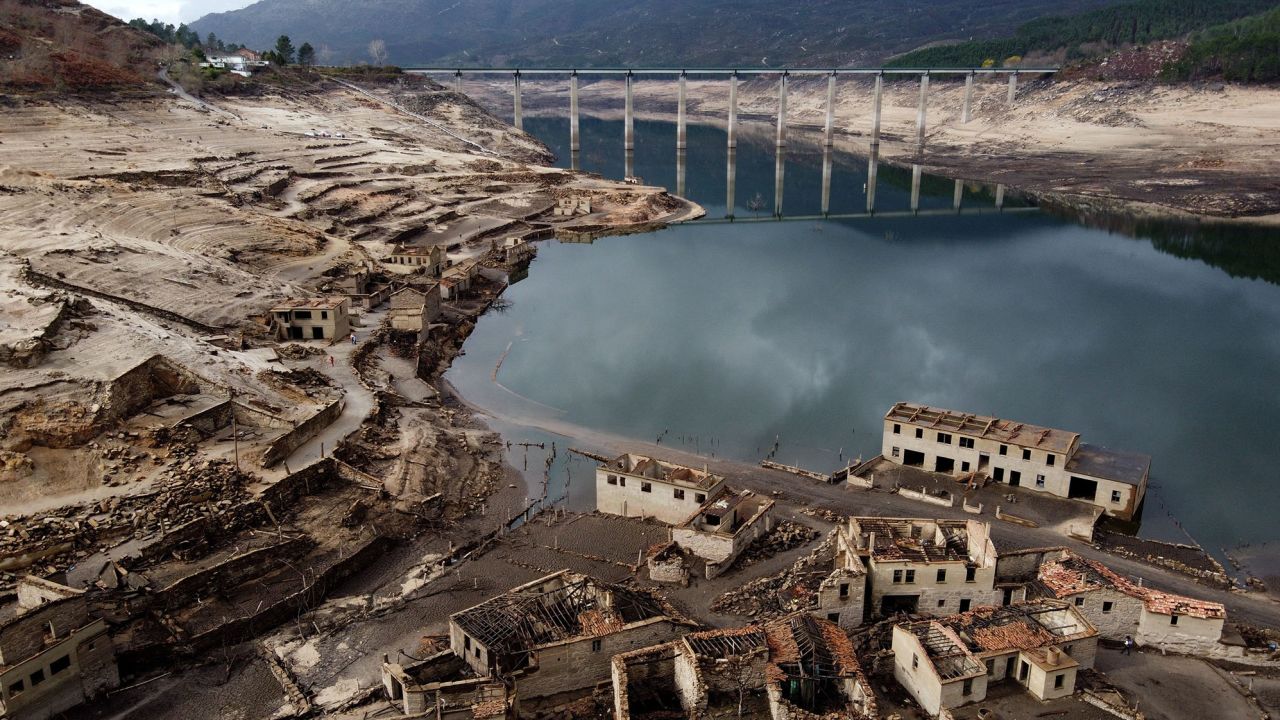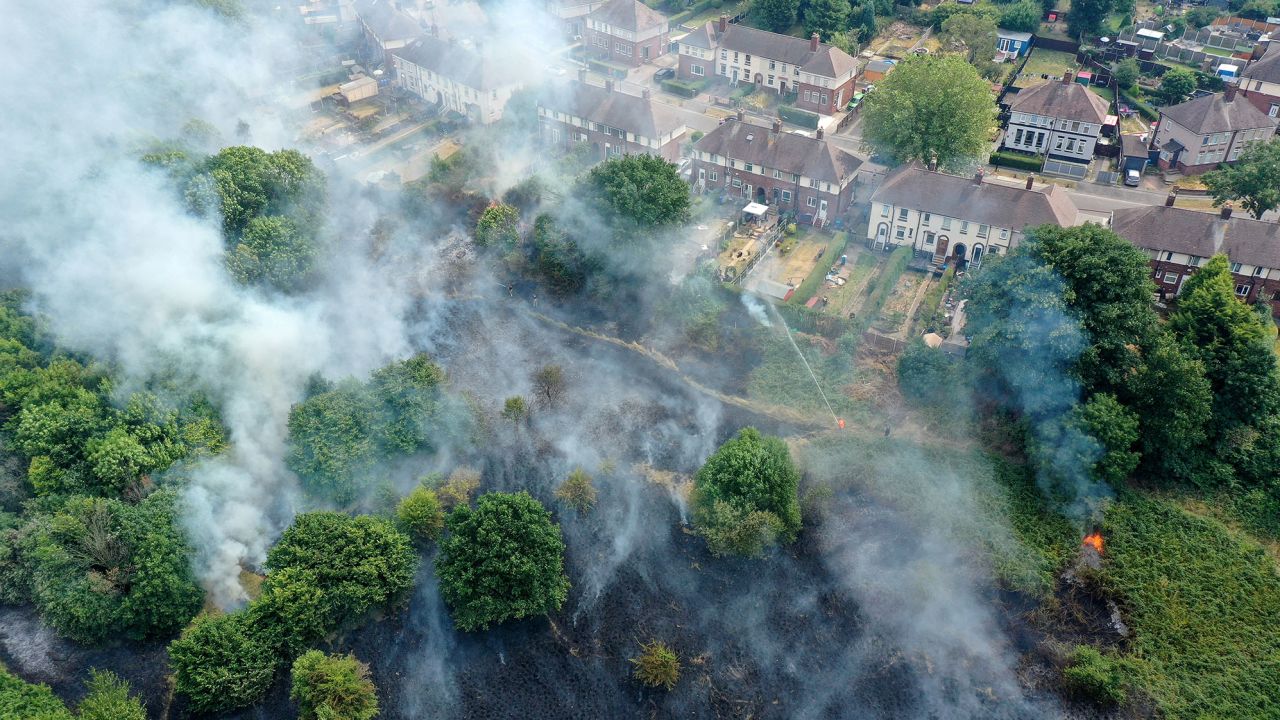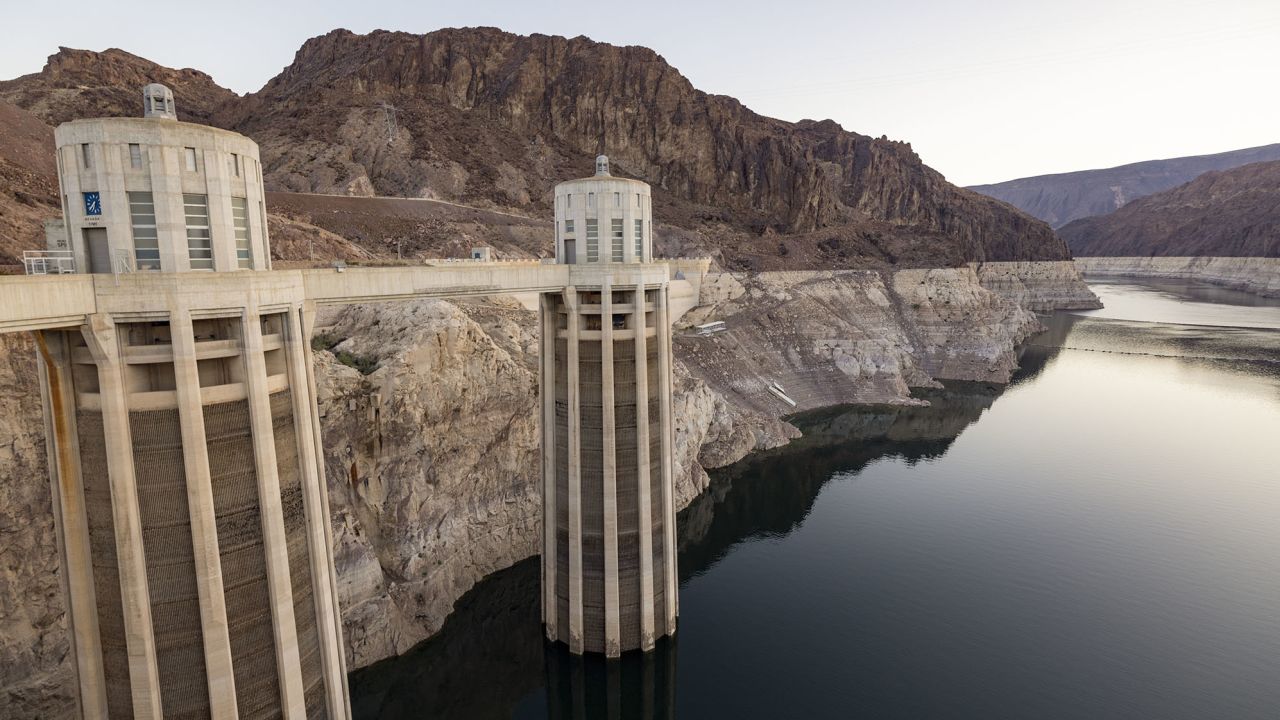‘Murderers’ and ‘criminals’: Meteorologists face unprecedented harassment from conspiracy theorists
“Murderers.” “Criminals.” “We are watching you.”
These are just a handful of the threats and abuse sent to meteorologists at AEMET, Spain’s national weather agency, in recent months. They come via social media, its website, letters, phone calls – even in the form of graffiti sprayed across one of its buildings.
Abuse and harassment “have always happened” against the agency’s scientists, Estrella Gutiérrez-Marco, spokesperson for AEMET, told CNN.
But there has been a rapid rise recently, coinciding with extreme weather in Spain. A severe drought has shrunk water levels to alarming lows, exacerbated by record-breaking April temperatures.
The abuse got so bad that in April, AEMET posted a video on Twitter calling for an end to the harassment, and asking for respect. Even the government intervened. Teresa Ribera, Spain’s minister for the ecological transition, posted on Twitter in support of the agency: “Lying, giving wings to conspiracy and fear, insulting … It is time to say enough.”
The harassment of meteorologists by conspiracy theorists and climate deniers is not a phenomenon confined to Spain.
National weather services, meteorologists and climate communicators in countries from the US to Australia say they’re experiencing an increase in threats and abuse, often around accusations they are overstating, lying about or even controlling the weather.

In Spain’s case, much of the trolling revolves around the rehashing of an old conspiracy theory: so-called “chemtrails.”
Under many of the agency’s Twitter posts, especially those that refer to more extreme weather, users have posted images of blue skies, crisscrossed with wispy, white trails. They falsely claim the trails contain a cocktail of chemicals to artificially manipulate the weather – keeping rain away and causing climate change.
It’s a theory roundly rejected by scientists.
Airplanes do release vapor trails called contrails, short for condensation trails, which form when water vapor condenses into ice crystals around the small particles emitted by jet engines.
But scientists have been clear: There is no evidence “chemtrails” exist.
‘One of the hardest experiences’
In April, meteorologist Isabel Moreno wrote a tweet saying “rain skips Spain,” with an image of a band of rain stretching across Europe but missing Spain almost entirely. She was completely unprepared for the response.
“It was one of the hardest experiences in social media in my life,” said Moreno, who appears on the Spanish TV channel RTVE. “I received HUNDREDS of responses to an (apparently) inoffensive tweet,” she told CNN in an email.
Many accused her of covering up weather manipulation.
“Do not take us for idiots,” said one. “They dry us up, and you are the spokesperson for those who do it,” said another. And on, and on.
While there were plenty of supportive messages, too, it was scary, Moreno said. “I have never seen either that amount of responses nor that level of aggression.” It took days for her to be able to go onto Twitter again without feeling anxious or stressed.
This phenomenon may be particularly pronounced in Spain, but it spreads much wider.
In France, meteorologists have been accused of exaggerating the country’s drought and heat.
Météo France, the French national meteorological service, said the agency’s communications are “the object of more and more repeated attacks,” a Météo France spokesman told CNN.
Climate misinformation on social media is particularly widespread, he said. It “seems to be on the rise, both in terms of the number of attacks directed against scientific publications but also the increasingly aggressive tone of the insults.”
In Australia, the Bureau of Meteorology has been bombarded with criticism of its reporting of temperature records, with claims they have been inflated to make climate change seem worse. A spokeswoman for BOM called these claims inaccurate. “The Bureau transparently reports on and provides access to its very large climate data records,” she said.
And in the UK, meteorologists reported unprecedented levels of online harassment during last year’s record-breaking heat wave, which led to the first-ever “red warning” for heat.
“As scientists communicated this information, they were accused of instigating a nanny state hysteria,” Liz Bentley, the chief executive of the Royal Meteorological Society, told CNN.
The Met Office was even accused of changing the color palette of its maps to make them look more dramatic. “We hadn’t, it was just really hot,” Oliver Claydon, a communications officer at the Met Office, told CNN.

US meteorologists and climate communicators have not escaped the barrage of abuse and conspiracies.
“Whenever I posted about global topics, like the yearly temperature report, the comments section would be filled with political jabs and conspiracy theories,” said Elisa Raffa, a broadcast meteorologist with Queen City News, based in Charlotte, North Carolina.
As a woman in the media, she more often receives comments about her appearance than the science she’s communicating, she told CNN.
Jennifer Francis, a senior scientist at Woodwell Climate Research Center, said she’s seen a ramp up of abuse lately.
“I receive almost daily verbal declarations of my ignorance and climate alarmism,” she told CNN.
An erosion of trust
Some disinformation experts draw a straight line from the conspiracies that flourished during the Covid pandemic – when experts faced a slew of abuse – to the uptick in climate conspiracies.
People need “trending” topics on which to hang these theories, said Alexandre López-Borrull, a lecturer in the Information and Communication Sciences Department at Universitat Oberta de Catalunya in Spain.
As Covid-19 fades from the headlines, climate change has become a strong rallying point. There’s been a big increase in “insults directed at all organizations related to the weather,” he told CNN.
“It’s a logical evolution of the broader trend around pushback on institutions, and the erosion of trust,” said Jennie King, the head of Climate Research and Policy at the Institute for Strategic Dialogue, a think tank focused on disinformation and extremism.
These kinds of conspiracies are usually grounded in the idea that a set of institutions is “using the pretext of climate change, or the pretext of solving public policy issues, to enact some insidious agenda,” she told CNN.
And the weather is an easy way in. Many aspects of climate science can feel very technical or abstract, but the weather is something people interact with frequently, said King.
“It’s a much more immediate way to bring a wider audience into that skepticism … planting seeds of doubt against the climate agenda writ large,” she said.

The role meteorologists have in explaining how climate change affects the weather, especially extreme weather, is a particular flashpoint.
Extreme weather can be alarming, especially when there are consequences and sacrifices, such as Spain’s water restrictions.
Conspiracy theories feed on this fear by offering a simple, enticing explanation, said López-Borrull. It’s easier to believe climate change is fake, or a manipulation by powerful people, than get your head around the complex problem and what it means for society.
“Change is hard and scary,” Francis said
‘I’m just trying to do my job’
It’s difficult to combat conspiracy theories when they bubble up. Some experts say they offer simple charts and rebuttals when they can, but try to ignore those who come in bad faith.
Doug McNeall, a climate scientist and statistician at the Met Office Hadley Centre, a UK research center, said that, as a scientist, he welcomes being challenged. “If people come with better evidence, and you change your mind, that’s good,” he told CNN.
But that’s not been his recent experience. “These people were not coming with better evidence,” he said. “They were coming to stop us talking about climate science.” He now relies much more on the block button.
Moreno echoed this. “I find it very difficult to change the minds of people that really have strong beliefs in these conspiracies,” she said. It’s easier to prevent the ideas from taking hold in people in the first place by tackling the myths and explaining how the atmosphere works, she added.
This kind of communication can really help, said King. Some of the best initiatives are “when media outlets or scientific institutions really try to demystify the process of how they produce public interest data,” she said.
King worries about the impact of these conspiracies on climate politics. “If we want to implement any policies, ambitious or not, around the environmental agenda, and the acute crisis of climate change, it does now seem that this is going to rear its head,” she said.
López-Borrull hopes meteorologists and climate communicators will persevere and not be pushed away from online spaces.
“The answer is not disappearing or closing social media profiles … they have to remain on social media because they are really useful,” López-Borrull said.
But as the climate crisis causes more extreme weather, harassment could increase even further.
And it takes a toll, said Raffa.
“I think it’s easy for people to forget I’m human, some of those comments can be hurtful. I’m just trying to do my job.”


